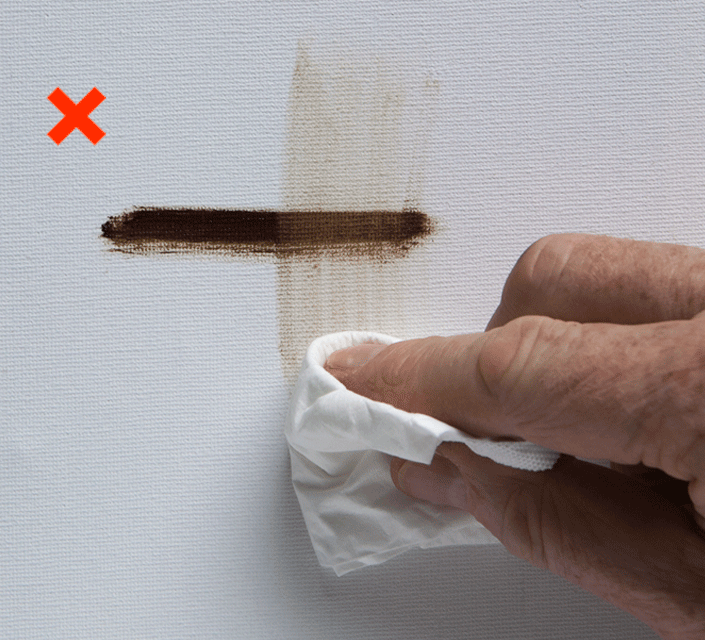Canvas and preparations. The word canvas means a fabric used as a painting surface. Sometimes the canvas is made from cotton fibers and other times from linen fibers. Panel is nowadays almost always made of masonite or fiber board.
Whatever you use, the big secret is in the preparation.

Poorly prepared panel or canvas is lethal. Often this trashy quality is the reason, a novice in oil painting gives up after a few attempts. Flimsy linen absorbs immediately every brushstroke. Try to wipe it out with a cloth, and you see a large part of the paint is soaked up in the surface. On good quality and properly prepared canvas or panel only a very small part of the paint remains behind. Try it yourself and see what happens. So preparation is of decisive importance for the success of a painting.
At least three layers of gesso
Most canvas weights fall between a scale that would have a thin bedsheet on one end and an extra heavy sailcloth on the other. I prefer the latter: I want linen that’s strong and durable, and that remains the preferred surface. I buy this heavy duty canvas on a roll and stretch the canvas myself on the stretcher bars. Then I apply three layers of gesso. (Three thin layers are better than one thick coating.) You can not paint on an oil primed canvas if you are using acrylics for the underpainting, but you can paint on an acrylic ground in oil
My advice: Never use a cheap hobby canvas from the supermarket. Once again: pamper yourself with good stuff!
Remember: even good quality linen, straight from your art supply store is often not sufficiently treated.
See also: Understanding the difference between Canvas and Linen
And: More about canvas.

Indeed, you are so right!!
Cheap canvas, badly prepared, cheap paint, no matter if it’s watercolor, acrylic or oil, never use the study quality!!
Brushes the same!!
Never start with bad material, no matter if its for painting, or horseriding with a cheap saddle, or race biking with an old cheap bike, or running on bad shoes!!
Ben, I love your tutorials, tips and tricks!
Bedankt!!
You really said it: Study quality should be forbidden!
I was fortunate to have a painter friend who also insists on good painting materials, otherwise I would have started with bad products as well. He introduced me to painting and gave me the first shopping list with high quality paints. After a while I tried some student grade paints and knew immediately the difference. One cannot paint with bad paints.